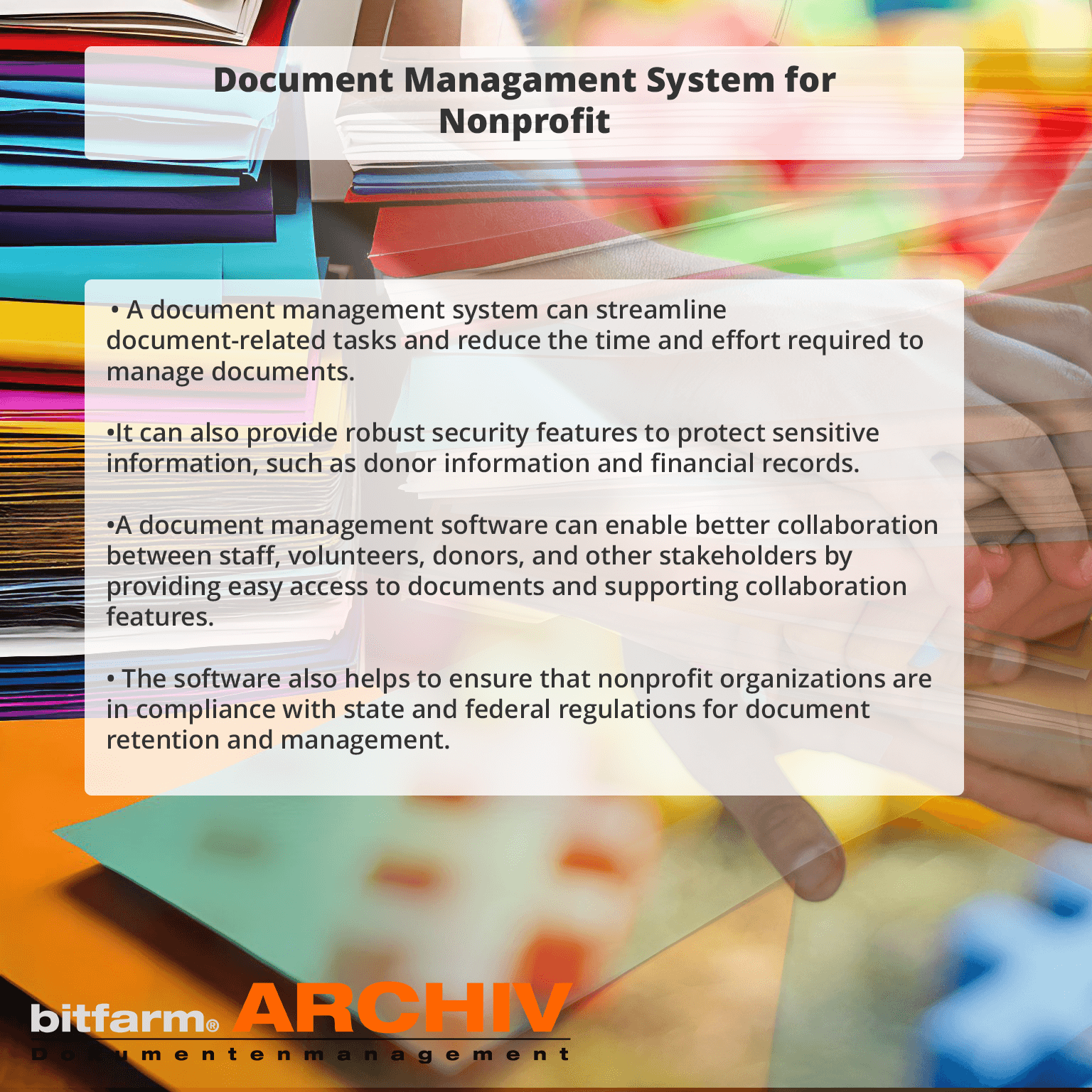 …don't search – find!
…don't search – find!
Did You Know...?
Nonprofit organizations deal with a high volume of documents that are often subject to legal and regulatory requirements.
A licence-free document management system can help ensure that these documents are stored securely, and that they can be easily retrieved when needed.
Nonprofit organizations often have limited funding and resources, and a document management system can help to streamline operations and reduce costs.
Contents

A DMS allows nonprofit groups to store their documents in a centralized, cloud-based location that can be accessed from anywhere with an internet connection. This means that team members can access documents remotely, whether they are working from home or out in the field. Moreover, the application can offer powerful search functionality, allowing users to quickly locate the documents they need.
Nonprofit organizations often deal with sensitive information, such as donor records, volunteer information, and financial statements. A DMS can offer advanced security features, such as user-based permissions and an audit trail, to ensure that only authorized users can access confidential information. Additionally, the software can help prevent the loss of critical information due to disasters such as fire, flood, or theft.
Many nonprofit groups work with volunteers, partners, and other stakeholders who may need access to certain documents. A DMS can simplify the process of sharing documents by allowing users to set up permissions for specific documents or folders. This can help to prevent confusion and ensure that everyone has access to the latest versions of important documents.
Using a DMS can save nonprofit organizations money by reducing the need for physical storage space and paper-based systems. Furthermore, a system can help to streamline processes and increase productivity, freeing up staff time for other tasks.

When choosing a document management system, nonprofit organizations should consider a number of key factors, including:
Your group should ensure that their document management system meets state and federal regulations for document retention and management. This may require the ability to set retention policies and audit trails to track document access and modifications.
Your organization likely generate a variety of documents, from grant applications to program materials. A DMS should be able to handle different document types and provide robust indexing and search capabilities.
Many nonprofit organizations work with a range of stakeholders, including volunteers, donors, and other organizations. The document management software should allow for easy collaboration and document sharing, with the ability to set permissions and access levels for different users.
Your software must protect sensitive information, such as donor information and financial records. The system should provide robust security features, including access controls, encryption, and backups.
Nonprofit often use a range of different software applications for fundraising, accounting, and other tasks. Using the tool, it should integrate with these applications to streamline workflows and reduce duplication of effort.
Limited funding is an ongoing issue, so cost is an important consideration when choosing an application. Licence-free Open-Source solutions may offer a more affordable option for smaller organizations, while larger organizations may require more advanced features and customization.
Implementing a DMS can be a complex process, but following these tips can help to ensure a smooth transition:
Before implementing a DMS, it's important to conduct a thorough inventory of all existing documents. This can help to identify which documents are essential and which can be discarded. This can also help to inform decisions about how to organize the documents within the application.
To make it easy to locate documents within the software , it's important to establish clear and consistent naming conventions. This can help to prevent confusion and ensure that team members can quickly find the documents they need.
To ensure that staff members can use the DMS effectively, it's important to provide thorough training on how to use the system. This can include hands-on training sessions, online tutorials, and user manuals.
To maximize the benefits of a EDMS, it's important to develop workflows and standard operating procedures that take advantage of the system's features. This can help to streamline processes and ensure that team members are using the DMS consistently.
After implementing a document management software, it's important to monitor usage and make adjustments as needed. This can involve gathering feedback from staff members and making changes to the system based on their input.
Are you interested in more information about the topic of document management systems for the nonprofit?